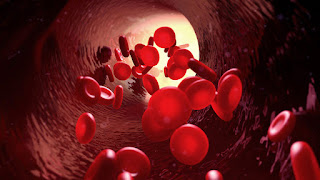TRANSPORTATION IN ANIMALS / PLANTS - INTRODUCTION , PROCESS
IN HIGHER ANIMALS,INCLUDING HUMAN BEINGS, THERE IS A CIRCULATORY SYSTEM FOR TRANSPORTATION OF DIFFERENT SUBSTANCES.
THESE INCLUDE:
• DIGESTED FOOD
• OXYGEN
• CARBIONDIOXIDE
• EXCRETORY WASTE, ETC.
NOTE = THE CIRCULATORY SYSTEM, IN THE HIGHER ANIMALS, CONSISTS OF:
# THE HEART
# BLOOD VESSELS
# BLOOD.
WHAT IS TRANSPORTATION ?
THE PROCESS OF MOVEMENT OF SUBSTANCES, FROM ONE LOCATION TO ANOTHER, IN AN ORGANISM, IS KNOWN AS TRANSPORTATION.
THE HEART IS A HOLLOW MUSCLE, IN THE MIDDLE LEFT OF THE CHEST, THAT PUMPS BLOOD TO DIFFERENT PARTS OF THE BODY.
A MUSCULAR WALL CALLED SEPTUM, DIVIDES THE HEART LENTH-WISE INTO ITS LEFT AND RIGHT SIDES.
A VALVE DIVIDES EACH SIDE INTO TWO CHAMBERS:
1. AN UPPER ATRIUM
2. A LOWER VENTRICLE.
WORKING
! WHEN THE HEART MUSCLES CONTRACT, THEY SQUEEZE THE BLOOD THROUGH THE ATRIA AND THEN THROUGH THE VENTRICLES.
! OXYGENATED BLOOD, FROM THE LUNGS, FLOWS INTO LEFT ATRIUM AND THEN TO ALL PARTS OF THE BODY.
! DEOXYGENATED BLOOD, RETURNING FROM THE BODY, FLOWS INTO THE RIGHT ATRIUM AND THEN TO LUNGS FOR OXYGENATION.
YOU DON"T KNOW ?
IF ALL BLOOD VESSELS IN YOUR BODY WERE TO BE ARRANGED ALONG A STRAIGHT LINE, THE LINE WOULD BE ALMOST 1,00,000 KM LONG.
ALSO READ : NUTRITION IN ANIMALS
BLOOD VESSELS
BLOOD VESSELS ARE AN INTRICATE NETWORK OF TUBES THAT TRANSPORT BLOOD TO THE ENTIRE BODY.
BLOOD MOVES TO ALL PARTS OF THE BODY THROUGH THESE BLOOD VESSELS.
BLOOD VESSELS ARE OF THREE TYPES:
1. ARTERIES
2. VEINS
3. CAPILLARIES.
ARTERIES
IT CARRY OXYGN- RICH BLOOD, FROM THE HEART TO ALL OTHER PARTS OF THE BODY.
AS THE BLOOD FLOWS THROUGH THE ARTERIES AT A HIGH PRESSURE, THEY HAVE THICK, ELASTIC WALLS.
VEINS
BLOOD VESSELS WHICH CARRY THE OXYGEN-DEFICIENT, AND CARBONDIOXIDE- RICH, BLOOD BACK TO THE HEART.
IT HAVE THINNER WALLS THAN THE ARTERIES AS THE BLOOD FLOWS THROUGH THEM AT A LOWER PRESSURE.
ARTERIES
THEY ARE TUBES THAT CONNECT THE ARTERIES AND VEINS AT ANY PART OF THE BODY.
NOTE = THE BLOOD ENTERS AN ORGAN THROUGH ARTERIES GETS DISTRIBUTED COLLECTS VARIOUS SUBSTANCES FROM THAT ORGAN AND THEN MOVES OUT OF IT THROUGH THE VEINS.
ALSO READ: NUTRITION IN PLANTS
BLOOD
BLOOD IS A FLUID MEDIUM THAT HELPS IN TRANSPORT OF DIFFERENT MATERIALS THROUGHOUT THE BODY.
IT IS MADE UP OF TWO COMPONENTS:
1. THE CELL COMPONENT
IT INCLUDES RBC,WBC AND BLOOD PLATELETS.
2. THE LIQUID COMPIONENT
IT INCLUDES BLOOD PLASMA.
RBC
IT STAND FOR RED BLOOD CELLS.
THESE ARE CELLS CONTAINIGNG THE PROTEIN MOLECULE HAEMOGLOBIN.
HAEMOGLOBIN IS ALSO KNOWN AS RESPIRATORY CARRIER.
BLOOD IN RED IN COLOR DUE TO PRESENCE OF HAEMOGLOBIN.
WBC
IT STAND FOR WHITE BLOOD CELLS.
THESE ARE THE DEFENSE FORES OF THE BODY.
IT DESTROY HARMFUL BACTERIA AND DEAD CELLS.
THEY PROTECT OUR BODY AGAINST INFECTIONS.
PLATELETS
IT HELP IN CLOTTING OF BLOOD.
THEY ARE THERE TO PREVENT EXESSIVE LOSS OF BLOODIF ANY PART OF THE BODY GETS INJURED.
BLOOD PLASMA
IT IS A STRAW-COLOURED LIQUID COMPONENT OF BLOOD .
IT NORMALLY HOLDS THE BLOOD CELLS.
IT MAKES UP ABOUT 55% OF THE BODY TOTAL BLOOD VOLUME.
FUNCTIONS OF THE BLOOD
! BLOOD HELPS TO DISTRIBUTE THE DIGESTED FOOD TO ALL PARTS OF THE BODY.
! CIRCULATION OF BLOOD ALSO HELPS TO MAINTAIN THE BODY TEMPERATURE.
! BLOOD CELLS, ESPECIALLY THE WBC, HELP FIGHT INFECTIONS.
! BLOOD TRANSPORT OXYGEN, FROM THE LUNGS TO THE TISSUES.
! BLOOD ALSO TRANSPORTS CARBONDIOXIDE, FROM THE TISSUES TO THE LUNGS.
SHORT NOTES ON TRANSPORTATION IN ANIMALS FOR SCHOOL FAIR COPY
- Blood is the fluid that flows in the blood vessels and transports the digested food from the small intestine to various parts of the body.
- There are two types of blood vessels- arteries and veins. The arteries carry oxygen-rich blood from the heart to different parts of the body and the oxygen-deficit blood is transported through the veins from all parts of the body to the heart.
- The heart is the main organ that pumps blood throughout the body.
- The process of removal of waste out of the cells is called excretion.
- The nitrogenous waste, excess sugar in the blood, excess salts, undigested wastes, and carbon dioxide are the substances to be excreted from the body.
- The lower organisms like amoeba, hydra, paramecium excrete the nitrogenous waste by the process of diffusion through the cell membrane, as they lack special excretory organs.
- The human excretory system constitutes kidneys, ureter, urinary bladder, urethra.
- Kidneys are the main excretory organ which regulates the balance of water and minerals in the body. They absorb minerals in the blood and eliminate the nitrogenous waste from the blood in the form of urine.
It is an important process to circulate water, essential nutrients, gases, and excretory products within the plant for various purposes. The vascular tissues are responsible for transportation in plants. The suction force helps in the transportation of water and minerals in the plant.
- Xylem is a vascular tissue involved in the conduction of water from root hairs to the rest of the plant parts.
- The transportation in the phloem is bidirectional. The food molecules are transported to the necessary regions with the help of phloem.
- The root hairs absorb water and minerals from the soil and store it in vacuoles. This water is absorbed by the plants by the suction force.
- The excess water in the plants is lost in the form of water vapour through the stomata in the leaves. This process is known as transpiration.
- The prepared food substances are translocated to different organs of the plant through the phloem. The excess food is stored in the storage organs of the plant.
NOW IF YOU STUDY WHOLE SO TRY TO PARTICIPATE IN THIS TEST.
 Reviewed by CURIOUS FACT
on
April 10, 2021
Rating:
Reviewed by CURIOUS FACT
on
April 10, 2021
Rating:





